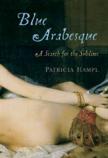Immersed in Leisure
This memoir begins with Patricia Hampl’s accidental viewing of the Matisse painting Woman Before an Aquarium, which waylaid her on her way to the cafeteria of the Chicago Art Institute to meet a friend some 34 years ago. She stood transfixed, absorbing the portrait of a woman gazing at a goldfish bowl before a blue Moroccan screen. The young writer felt deeply drawn to this madonna, but a modern one, whose gaze seemed to represent prophetically the future she herself wanted. She was not being looked at like so many odalisques in 19th-century painting; she was doing the looking. But what did she see, what was the point of the screen, and why did this picture suggest so much that it did not explain?
Throughout her career as poet, memoirist and professor, Hampl has pursued these questions, shadowing Matisse’s life and canvases in search of the answers, collecting postcards of his work as if they were baseball cards. As in her earlier books, the search is never merely intellectual, nor does it stop with Matisse. She takes us to France, to the Holy Land, to the tomb of the Sufi poet Rumi in the Anatolian plains and back to her native St. Paul. She shifts time and genres easily, from childhood to the present, from art history and theory to biography, travelogue and personal journal.
Along the way we are treated to fascinating bits of information on earlier artists and other travelers, as well as ideas that counter current stereotypes. Defending the maligned tourist (self-defense?), Hampl claims that to be elsewhere is the homely version of the transcendence sought by artists. Defending decoration, considered second-rate by art critics, she argues that Matisse’s love of decoration is dedicated to a beauty that unites the desires of the rich with faithfulness to the products of the hard-working poor, like the weavers among whom he had grown up.
She follows her artist to the edge of the Mediterranean, where he had come to escape the cold, restrictive north of Picardy in search of the sun, like so many others: F. Scott Fitzgerald, Virginia Woolf, Thomas Mann. Hampl tells us that she is writing this memoir in coastal Cassis, in the home of the grandson of railroad tycoon James T. Hill of St. Paul, donated as a residence for artists and writers. Now we begin to understand how her seemingly disparate stories, biographical snapshots, travel details and memories from childhood connect with one another.
Jerome Hill had come here to escape his own restrictive North. Among his finest creations was the Academy Award-winning autobiographical Film Portrait (1971) in which his real St. Paul voice reached Hampl like a personal letter, an intimate communication such as she had never experienced before in a movie. So did the voice of her favorite pagan saint, the doomed short story writer Katherine Mansfield, who had lived nearby before her final illness forced her to leave. As a young girl Hampl was introduced to the intensely personal quality of Mansfield’s Letters and Journals by the only mother in St. Paul who spoke about such things with her own authority.
Hampl’s tribute to Mansfield’s courage and brilliance as a writer is not fashionable and hence all the more welcome. Hampl learned from her to trust the wisdom of brevity and ellipsis. In Mansfield’s words, The truth is, one can get only so much into a story; there is always a sacrifice. Mansfield confessed she could capture only glimpses in her own work, but Hampl sees that in her stress on the role of consciousness in creation itself, Mansfield has captured the distinguishing mark of modern writing.
She understands now why Matisse’s paintings are so much more moving than those of 19th-century painters like Eugène Delacroix and Jean-Auguste-Dominique Ingres, who paint similar subjects. He was never simply portraying subjects; he was sharing his intense perception of the living world in order to attest to what is. His shards of fabric like the blue screen, omnipresent in his work, suggest the same short but ecstatic glimpses Mansfield experienced. And we begin to see how Hampl’s memoir mirrors those of her secular saints with its own shards, film clips and glimpses.
And though Blue Arabesque is sprinkled with clues that her Catholic faith bedevils her, this pilgrimage in search of the sublime is a spiritual one. Strong, independent nuns provide a frame. First comes the contemplative who surprised the author by saying leisure was the most important element in her life: It takes time to do this. It is hard to pray and hard to turn the leisure that allows for painting merely beautiful things into the highly disciplined divine nonchalance of Matisse’s art. Though there is hardly any explicit reference to religion, the attentive reader will discover the presence of the Spirit in this memoir, which marks it as an even deeper penetration of the divine mystery than Hampl’s earlier Virgin Time. Meeting the nun who was Matisse’s last model at the chapel at Vence that he created for her, she sees a Moroccan door to the confessional and recognizes it as the parallel of his blue screen. It is a door to a tiny room where you tell the truth and are forgiven.
Much is left for the reader to consider and pursue after reading this joy-filled and intriguing book.
This article also appeared in print, under the headline “Immersed in Leisure,” in the November 6, 2006, issue.








